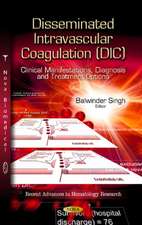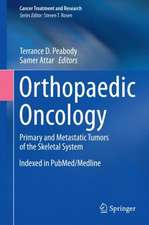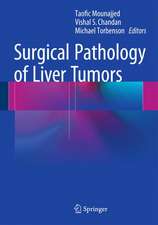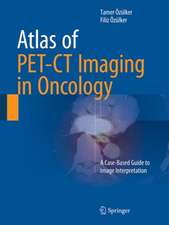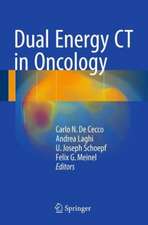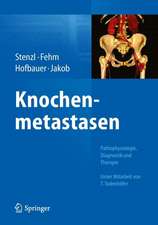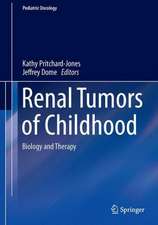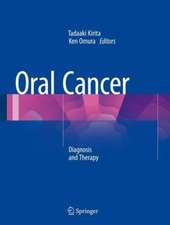Hormonal Carcinogenesis III: Proceedings of the Third International Symposium
Editat de Jonathan J. Li, Sara A. Li, Janet R. Dalingen Limba Engleză Paperback – 21 oct 2011
Preț: 385.57 lei
Preț vechi: 405.87 lei
-5% Nou
Puncte Express: 578
Preț estimativ în valută:
73.79€ • 80.12$ • 61.98£
73.79€ • 80.12$ • 61.98£
Carte tipărită la comandă
Livrare economică 22 aprilie-06 mai
Preluare comenzi: 021 569.72.76
Specificații
ISBN-13: 9781461274117
ISBN-10: 1461274117
Pagini: 604
Ilustrații: XLIII, 555 p.
Dimensiuni: 155 x 235 x 32 mm
Greutate: 0.84 kg
Ediția:Softcover reprint of the original 1st ed. 2001
Editura: Springer
Colecția Springer
Locul publicării:New York, NY, United States
ISBN-10: 1461274117
Pagini: 604
Ilustrații: XLIII, 555 p.
Dimensiuni: 155 x 235 x 32 mm
Greutate: 0.84 kg
Ediția:Softcover reprint of the original 1st ed. 2001
Editura: Springer
Colecția Springer
Locul publicării:New York, NY, United States
Public țintă
ResearchDescriere
Since our previous symposium in 1995, the pace of research in hormones and cancer has accelerated. Progress in our understanding of hormonal carcinogenic processes has been a direct result of the advances made in cell biology, endocrinology, and carcinogenesis at the molecular level. The newer fields of molecular genetics and cytogenetics already have and are expected to continue to playa major role in furthering our understanding of the cellular and molecular events in hormonal carcinogenesis. It has become increasingly clear that the risk of naturally occurring sex hormones in carcinogenic processes, both in human and in animal models, requires only minute quantities of hormones, at both the serum and tissue levels. Moreover, hormone target tissues for neoplastic transformation, perhaps with the exception of the liver, generally have relatively modest ability to metabolize sex hormones, such as the breast and prostate. Table 1 summarizes the serum, and in most cases, the tissue levels of sex hormones, both endogenously and exogenously ingested, which are associated with increased risk for endocrine-associated cancers such as breast, endometrium, and prostate, as well as the hormone levels of four experimental models that have been shown to elicit high tumor incidences. In contrast to the human, in which the hormone levels are cyclic, however, the latter require continuous hormone exposure at these relatively low levels.
Cuprins
Symposium Address Hormonal Carcinogenesis: Perceptions, Challenges, and Anticipations.- State Of The Art Lectures.- 1 The Numbers Game with Estrogen Receptors and Growth Regulation.- 2 Expression Genetics of Hormone Dependent Human Tumors.- 3 New Directions in Epidemiologic Studies of Hormonally-related Cancers.- 1. Epidemiology: Breast and Prostate Cancer.- 4 Estrogen Causes Breast Cancer: Increasing Duration of Use of Postmenopausal Hormones Increases the Risk of Breast Cancer.- 5 Frequency of BRCA2 Mutations in Women with Early Onset Breast Cancer Drawn from a Population-Based Study.- 6 Prostate Cancer, Androgens, and Estrogens.- 2. Molecular Genetics of Hormonal Cancers.- Breast Cancer Molecular Cytogenetics.- 7 Genome Scanning and Tissue Microarrays for the Analysis of Molecular Mechanisms Underlying Hormone Therapy Failure in Prostate Cancer.- 8 Serial Analysis of Gene Expression in Breast Cancer Cells.- 9 The Effects of Triphenylethylene Antiestrogens on Parameter of Multistage Hepatocarcinogenesis in the Rat.- 3. Estrogen Receptor Interactions.- The Curious Pharmacology of the Antiestrogens.- 10 Estrogen Receptor ?: An Important Player in Estrogen Action.- 11 Estrogen Receptor Mediated Genomic Instability in the Syrian Hamster Kidney: A Critical Event in Hormonal Oncogenesis.- 4. Estrogen/Progesterone - Breast Cancer.- Breast Cancer Prevention with Estrogen and Progesterone: Mimicking the Protective Effect of Pregnancy.- 12 The Dual Role of Estrogens and Cathepsin D in Invasion and Metastasis.- 13 Estrogen-induced Breast Cancer in Female ACI Rats.- 14. A Transgenic Mouse Model for Mammary Carcinogenesis.- 5. Cell Cycle, Cell Proliferation.- Receptor Tyrosine Kinases and the Effects of Ovarian Steroids on Cell Proliferation.- 15 Transcriptional Control of Cell Cycle Progression by Estrogenic Hormones: Regulation of Human Cyclin D1 Gene Promoter Activity by ER-?.- 16 Estrogen Regulation of Cell Cycle Progression.- 6. Oncogenes/Tumor Suppressor Genes.- 17 Estrogen and c-myc Protooncogene Actions in Human Breast Cancer.- 18 Steroid Hormone Regulation of Vascular Endothelial Growth Factor (VEGF) Production: A Potential Step in Hormonal Carcinogenesis.- 19 TGF-?/Estrogen-inducible Early Gene (TIEG): A Candidate Tumor Suppressor or Cell Cycle Regulator?.- 7. Aromatase: Implications For Breast Cancer.- Aromatase: Implications for Breast Cancer.- 20 Control of Estrogen Biosynthesis in Breast Cancer.- 21 Regulation of Aromatase in Normal and Malignant Breast Tissues: The Role of the Immune System.- 22 Regulation of Aromatase in Breast Cancer and Correlation of Aromatase and Cyclooxygenase Gene Expression.- 8. Organ Site: Prostate/Ovary.- Androgen Receptor and its Role in the Development and Control of Androgen-independent Prostate Cancer.- 23 Etiologic Mechanisms in Epithelial Ovarian Cancer.- 24 Stromal Influences in Prostatic Carcinogenesis.- 25 Androgen Receptor Structure and Function in Prostate Cancer.- 9. Osteoporosis and Estrogens.- Hormone Replacement Therapy: A Clinical Overview.- 26 Role of Estrogen and Bone Morphogentic Protein Signaling in Osteoblast Differentiation.- 27 Estrogens and the Skeleton.- 10. Cardiovascular Disease and Estrogens/Progestins.- 28 Mechanisms of Estrogen Action on the Cardiovascular System.- 29 Atherosclerosis and Hormone Replacement Therapy: The Role of Estrogen in Secondary Prevention of Cardiovascular Events.- Viewpoint.- 30 Long-term Hormone Replacement Therapy: A Contrary Point of View.- Epilogue.- 31 A Unified General Mechanism for Hormonal Carcinogenesis Begins to Emerge.- Communications.- Session I. Epidemiology/Human Studies.- The Risk of Postmenopausal Breast Cancer After Estrogen and Estrogen-Progestin Replacement.- No Significant Difference in Age at Menarche, Menstrual Cycle Length, Age at First Full Term Pregnancy, and Nulliparity among BRCA1 Mutation Carriers Compared with Their Unaffected Relatives.- Cell Proliferation and Apoptosis in the Normal Breast Epithelium of Pre, Peri, and Postmenopausal Women.- Expression and Estrogen Inducible Promoter Activity of Human Estrogen-responsive Finger Protein Gene in Breast and Ovarian Cancer Cells.- Novel Small Molecule IL-6 Inhibitors as Anti-Cancer Drugs.- Session II. Metabolism Studies/Cellular & Molecular Biology.- Cellular Transforming Activity and Genotoxic Effects of 17?-EstradioI and Its Eight Metabolites in Syrian Hamster Embryo Cells.- Evidence for an Initiation Mechanism of 17? Estradiol Carcinogenesis.- Estradiol Metabolism by Rat Liver Microsomes from Strains Differing in Susceptibility to Mammary Carcinogenesis.- Induction of Breast Cancer in Noble Rats with a Combination of Estrogen and Testosterone.- Isolation and Purification of Breast Carcinoma Cell Lines from a Noble Rat.- The ACI Rat as a Genetically Defined Animal Model for the Study of Estrogen Induced Mammary Cancers.- Characteristics of Dehydroepiandrosterone-induced Hepatocarcinogenesis in the Rat.- Hepatic Toxicity of Estrogen in Armenian and Chinese Hamsters.- Suppression of Liver Tumor Formation by the Liver Microenvironment of Female, but Not Male, Syngeneic Hosts.- Dietary Energy Restriction Inhibits Estrogen Induced Pituitary Tumorigenesis in a Rat Strain Specific Manner.- Estrogen-induced Prolactinoma Development: A Role for Cell-Cell Communication.- Combined Administration of Transplacental Ethylnitrosourea and Postnatal Diethylstilbestrol Induce Neural Differentiation in Interstitial Cells of the Golden Hamster Kidney.- Aromatase Overexpression: Is Aromatase an Oncogene?.- Genetic Toxicity In Vitro of Bisphenol A-Diglycidylether (BADGE) and its Hydrolysis Products.- Lack of Genotoxicity of Major Mammalian and Plant Lignans at Various Endpoints In Vitro.



